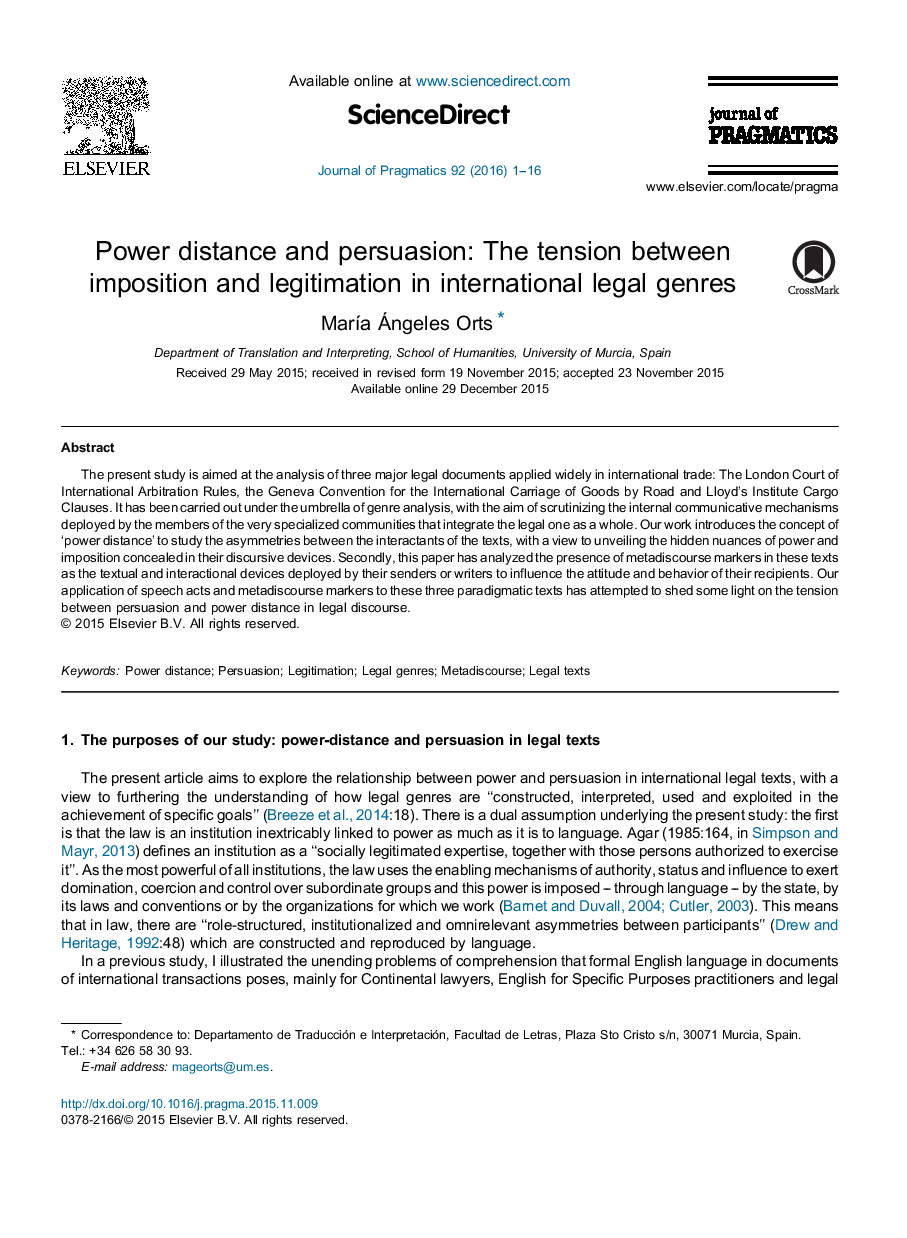| Article ID | Journal | Published Year | Pages | File Type |
|---|---|---|---|---|
| 932493 | Journal of Pragmatics | 2016 | 16 Pages |
•Power and persuasion devices are belied in the structure of legal texts.•Power distance is a crucial factor to measure the authoritativeness of legal texts.•Textual mechanisms may be indicators of the way in which persuasion is exercised.•The tension between power and persuasion is linked to the purpose of legal genres.
The present study is aimed at the analysis of three major legal documents applied widely in international trade: The London Court of International Arbitration Rules, the Geneva Convention for the International Carriage of Goods by Road and Lloyd's Institute Cargo Clauses. It has been carried out under the umbrella of genre analysis, with the aim of scrutinizing the internal communicative mechanisms deployed by the members of the very specialized communities that integrate the legal one as a whole. Our work introduces the concept of ‘power distance’ to study the asymmetries between the interactants of the texts, with a view to unveiling the hidden nuances of power and imposition concealed in their discursive devices. Secondly, this paper has analyzed the presence of metadiscourse markers in these texts as the textual and interactional devices deployed by their senders or writers to influence the attitude and behavior of their recipients. Our application of speech acts and metadiscourse markers to these three paradigmatic texts has attempted to shed some light on the tension between persuasion and power distance in legal discourse.
